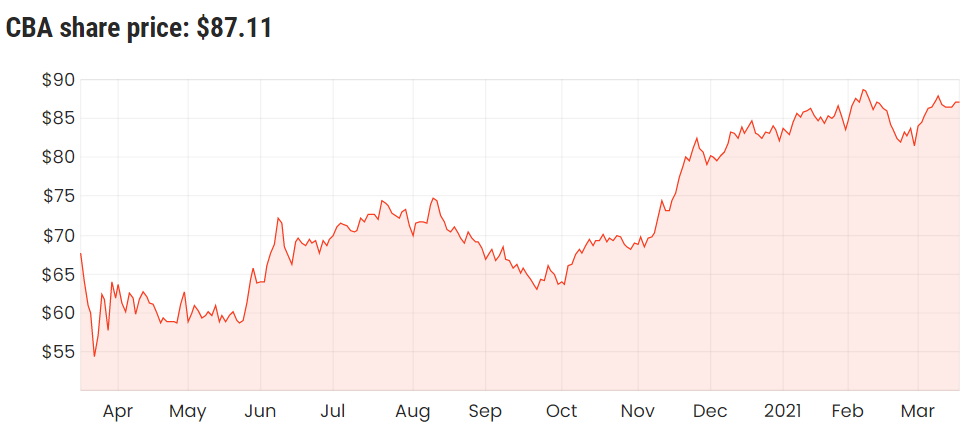At the current Commonwealth Bank of Australia (ASX: CBA) share price it offers a 5% dividend yield including franking credits. Is that too good to ignore?
What’s going on with the CBA share price?
CBA shares have produced solid returns over the last six months – rising by 34%, plus the dividend.

It has been a volatile year for CBA, but there’s light at the end of the tunnel now.
CBA’s half-year result was a bit of a mixed result. Statutory net profit was down 20.8% to $4.88 billion, but cash net profit was only down by 10.8% to $3.9 billion.
A key part of the profit decline was the loan impairment expense increasing by $233 million to $882 million reflecting uncertainty in the economic outlook.
Another drag on performance was a decrease of the net interest margin (NIM) to 2.01% – this was down 3 basis points (0.03%) over six months and down 10 basis points (0.10%) over 12 months.
The NIM is a key profitability measure because it’s how much banks earn on the money they lend out against the cost of that funding (such as deposits). Higher liquid balances/deposits and the impact of the low interest rate environment on deposits and capital earnings were key reasons for the decline.
CBA’s loan book continues to grow and its number of loan deferrals has been falling.
However, much of the COVID-19 response will be rolling off soon. Jobkeeper ends this month, loan deferrals are ending and the enhanced jobseeker rate will reduce.
The recent announcement that CBA is planning to launch a buy now, pay later offering is interesting, but I don’t think it will make much of a difference to CBA. Buy now, pay later isn’t an industry that makes much profit yet. I think it’s more about making sure it keeps other fintech businesses like Afterpay Ltd (ASX: APT) at bay.
Why the bank can fund bigger dividends
There are a few different reasons why CBA will be able to fund bigger dividend payments to shareholders over the next 12 months.
Firstly, the regulator Australian Prudential Regulation Authority (APRA) has decided that ASX banks don’t have to hold onto a certain amount of their earnings. It’s no longer an emergency situation, but APRA still wants them to be careful. Banks will be able to pay a higher dividend payout ratio.
The earnings of banks are now rebounding after COVID-19, so even if they paid the same payout ratio the actual dividend can increase due to higher profit. CBA’s impairment expenses over the next 12 months aren’t going to be the same as the last 12 months, unless something wildly bad and unexpected happens with the Australian economy.
Finally, CBA’s balance sheet looks particularly strong right now. CBA’s common equity tier 1 (CET1) capital ratio was 12.6% at 31 December 2020. I’m not suggesting CBA is going to pay a huge dividend in six months, but I think it will allow the bank to return an attractive dividend quite quickly.
What is CBA’s dividend yield at the current share price?
It’s anyone’s guess what CBA’s annual dividend is going to be for FY21. Looking at CommSec – where the numbers and estimates are provided from independent third parties – the estimated CBA total dividend for this year is $3.15 per share, which is a 5.2% yield including those juicy franking credits. The dividend could then grow to almost $3.50 per share in FY22.
The yield doesn’t actually seem that strong, does it? That’s because the CBA share price has performed so strongly since the COVID-19 crash. I don’t think that CBA presents great value right now, particularly in this low interest rate environment. If interest rates start rising then CBA could be a better idea.
There are some ASX dividend shares I like that are aligned with a recovery to the local and global economy such as Magellan Financial Group Ltd (ASX: MFG), Brickworks Limited (ASX: BKW) and Washington H. Soul Pattinson and Co. Ltd (ASX: SOL).








